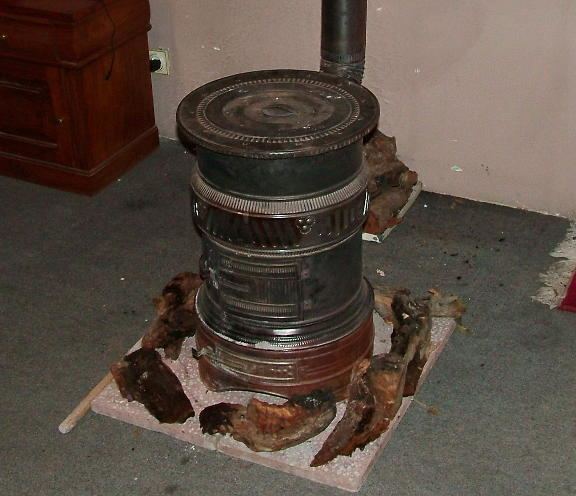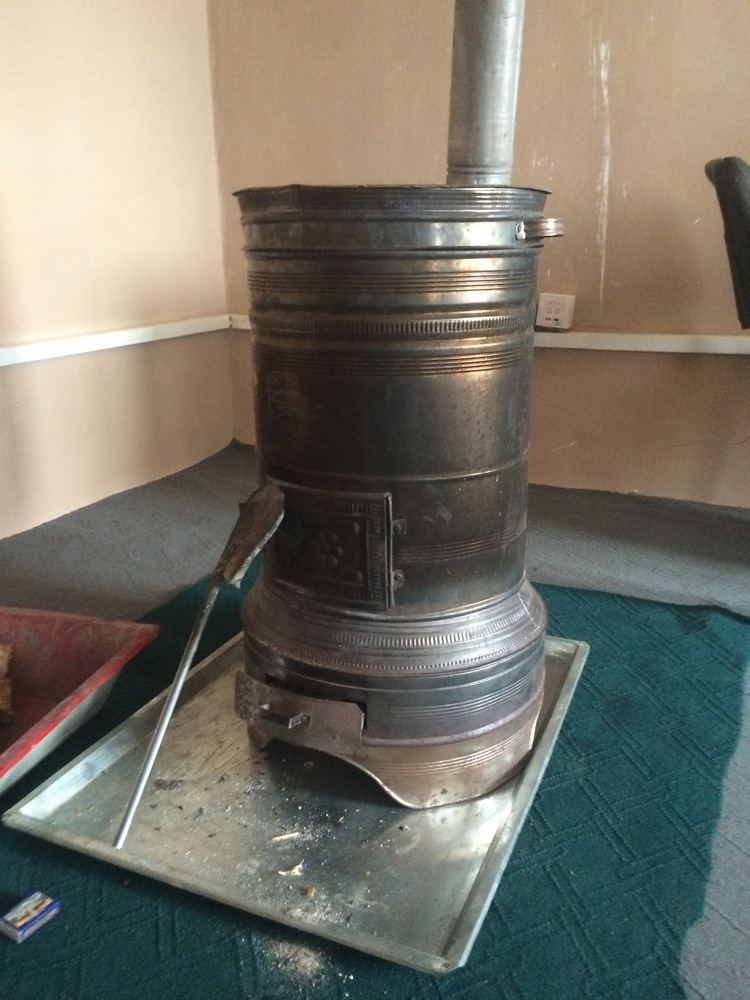 Similar Angithi, Catalytic heater, Ceramic heater | ||
A bukhāri (Kashmiri: बुख़ारी or بُخاری) is a traditional space heater from the northern areas of the Indian subcontinent, which is typically a wood-burning stove. Bukharis consist of a wide cylindrical fire-chamber at the base in which wood, charcoal or other fuel is burned and a narrower cylinder on the top that helps in heating the room and acts as a chimney. The base of a Kashmiribukhari is wider than that of most western wood-burning stoves. Bukharis are found in the entire northern belt of the region, i.e. Afghanistan, Kashmir, Nepal, Pakistan, Bhutan and Northeast India.
Contents
- How to fire a Bukhari
- Etymology
- Use in poultry farming
- Fuel alternatives and conservation
- Hazards
- References
How to fire a Bukhari
Etymology.

The term bukhār is a Hindustani word derived from Persian meaning heat or fever. In modern Persian, the term bukhari generically refers to a heater.
Use in poultry farming
Bukharis are in widespread use by poultry farmers in North India to keep birds warm during winter nights.
Fuel alternatives and conservation
Forest conservation imperatives have resulted in the development of alternative designs for bukharis in India, including kerosene-based versions and bukharis that are more fuel-efficient than the traditional varieties.
Hazards
Frequently, bukhari chimneys are not long enough to vent smoke outside the house, resulting in annual deaths from carbon monoxide poisoning in the region. Public authorities and mass media in the region often exhort people not to use angithis or bukharis in closed rooms. Bukharis also present a hazard for children due to their hot metallic surfaces and easy hinged access to the fuel-burning area.
